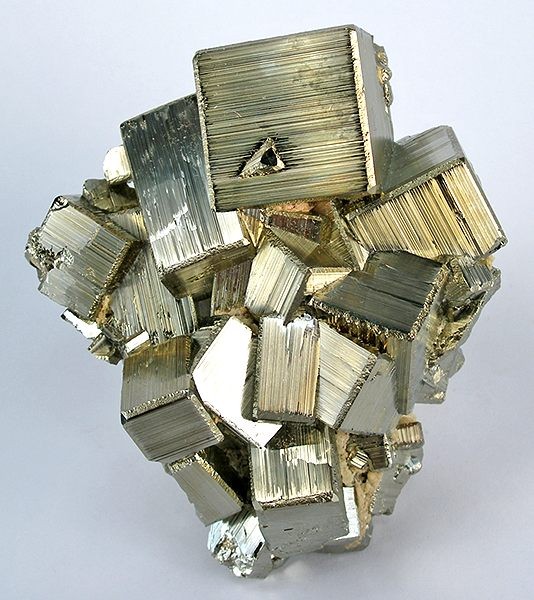Striation (geology) on:
[Wikipedia]
[Google]
[Amazon]


 In
In
 In
In geology
Geology () is a branch of natural science concerned with Earth and other astronomical objects, the features or rocks of which it is composed, and the processes by which they change over time. Modern geology significantly overlaps all other Ear ...
, a striation is a groove, created by a geological process, on the surface of a rock or a mineral.
In structural geology, striations are linear furrows, or linear marks, generated from fault movement. The striation's direction reveals the movement direction in the fault plane.
Similar striations, called glacial striation
Glacial striations or striae are scratches or gouges cut into bedrock by glacial abrasion. These scratches and gouges were first recognized as the result of a moving glacier in the late 18th century when Swiss alpinists first associated them w ...
s, can occur in areas subjected to glaciation
A glacial period (alternatively glacial or glaciation) is an interval of time (thousands of years) within an ice age that is marked by colder temperatures and glacier advances. Interglacials, on the other hand, are periods of warmer climate betw ...
. Striations can also be caused by underwater landslides.
Striations can also be a growth pattern or mineral habit
In mineralogy, crystal habit is the characteristic external shape of an individual crystal or crystal group. The habit of a crystal is dependent on its crystallographic form and growth conditions, which generally creates irregularities due to ...
that looks like a set of hairline grooves, seen on crystal faces of certain mineral
In geology and mineralogy, a mineral or mineral species is, broadly speaking, a solid chemical compound with a fairly well-defined chemical composition and a specific crystal structure that occurs naturally in pure form.John P. Rafferty, ed. ( ...
s. Examples of minerals that can show growth striations include pyrite
The mineral pyrite (), or iron pyrite, also known as fool's gold, is an iron sulfide with the chemical formula Iron, FeSulfur, S2 (iron (II) disulfide). Pyrite is the most abundant sulfide mineral.
Pyrite's metallic Luster (mineralogy), lust ...
, feldspar
Feldspars are a group of rock-forming aluminium tectosilicate minerals, also containing other cations such as sodium, calcium, potassium, or barium. The most common members of the feldspar group are the ''plagioclase'' (sodium-calcium) feldsp ...
, quartz
Quartz is a hard, crystalline mineral composed of silica (silicon dioxide). The atoms are linked in a continuous framework of SiO4 silicon-oxygen tetrahedra, with each oxygen being shared between two tetrahedra, giving an overall chemical form ...
, tourmaline
Tourmaline ( ) is a crystalline silicate mineral group in which boron is compounded with elements such as aluminium, iron, magnesium, sodium, lithium, or potassium. Tourmaline is a gemstone and can be found in a wide variety of colors.
The ...
, chalcocite
Chalcocite (), copper(I) sulfide (Cu2S), is an important copper ore mineral. It is opaque and dark gray to black, with a metallic luster. It has a hardness of 2.5–3 on the Mohs scale. It is a sulfide with a monoclinic crystal system.
...
and sphalerite.
Glacial Striations
The surface of rocks can have an altered appearance as a result of the movement of ice. They can show a polished looking surface scarred with glacial striations. Often these striations carved into the bedrock extend for long distances. The scars are a result of hard rocks that were stuck as fragments in the glaciers, being forced into the surface of the bedrock with great pressure along with gradual movement. The bedrock that we can observe these marks in today must be a hard rock able to be able to preserve these features, which could have formed up to 30,000 years ago. Consequently, rocks that are softer don't preserve the polished appearance or the striation features nearly as well. However, other features can be presented on hard rocks like striations, but are formed differently. A formation known as a slickenside also shows smooth, polished looking surfaces with scars in uniform lines. Contrary to glacial striations, slickensides are a result of movement along a fault line which erodes the bedrock without the presence of ice.See also
*Slickenside
In geology, a slickenside is a smoothly polished surface caused by frictional movement between rocks along a fault. This surface is typically striated with linear features, called slickenlines, in the direction of movement. Geometry of slickensi ...
Bibliography
*External links
Structural geology Mineralogy Glacial erosion landforms {{geology-stub